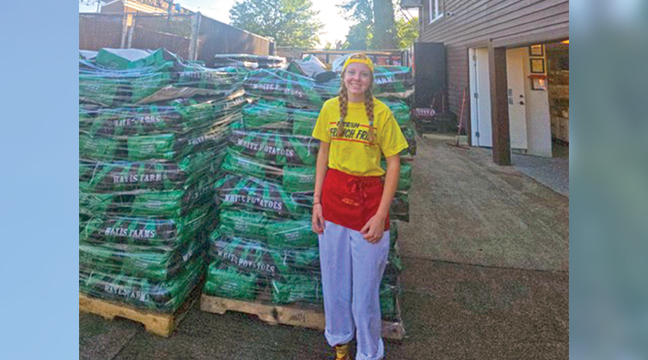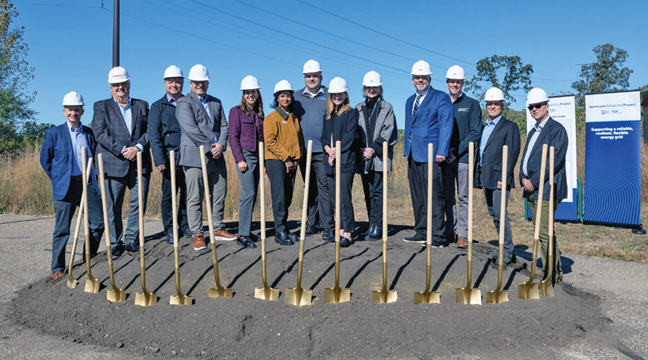As the Polar Vortex freezing weather continues to crash down on the state of Minnesota in January and February, people who have been relying on propane to heat their homes are getting nailed as supplies dwindle and prices for the gas spike to unheard of amounts. While the severe cold of those two months looks to be dragging all Minnesotans into the month of March, steps are being taken by government officials as well as suppliers and homeowners to make sure nobody gets froze out.
The propane crunch was the result of a late, wet harvest that required more propane than usual to dry crops, said Lakes Gas Vice President Steve Sargeant. Then there was a pipeline shutdown for a few weeks in December, followed by a sustained period of severe cold which has increased demand for heating fuel.
The result? Prices for propane going “off the charts” and people getting worried they’ll run out or won’t be able to afford.
Just ask Becker Twp. resident Paul Olson who is renting a home with his wife and kids and hasn’t had to deal with propane issues since he was a child.
“We’ve been living in Tennessee for years and now that we’re back in Minnesota, we’re having to deal with these issues we didn’t worry about in the south,” said Olson.
Olson said about a month ago he filled his propane tank at the rented home with 100 gallons of the gas (all that was allowed at the time). It cost him $400. He was hoping that fill would get them through a month or so, but he was wrong.
“Within two weeks, we were down to the 15% limit and had to have it filled up again,” he said. “This time the same 100 gallons or so cost us $500.”
Olson said he paid for the first two fillings with cash, but had to put the third filling on credit just to get by.
“If it gets worse, I don’t know what we’ll do,” Olson said. “We may have to reach out to family, friends or the church the next time.”
That may not have to happen as Olson said he discovered an energy grant program through Tri-Cap that may come just in the nick of time.
“If the grant goes through, we’ll be able to eliminate that credit charge and maybe pay for upcoming fills,” he said. “My suggestion to people is considering going with alternative energy sources like a wood-burning stove or fireplace so you’re not totally reliant on one energy source to keep your home heated.”
Olson gets his propane from Beaudry Oil and Propane in Elk River.
Dan and Sheri Haus of Clear Lake have seen the same situation at their home where their propane — supplied by Anderson-Gilyard — has seen a significant price increase since the late fall.
“In October, the price was $1.69,” said Dan. “In February, the price was around $4. It’s tough, we had to turn the thermostat down about five degrees. At the end of this month it’s around $3 a gallon.”
The Hauses have their tank filled two-to-three times a winter season.
With the supply improving, Sargeant said he’s starting to see relief on the horizon.
“We’re beginning to see the rates come down some lately,” said Sargeant.
A few weeks ago, Gov. Mark Dayton and several DFL members of the state’s congressional delegation sent letters to the White House, urging the president to take high-priority steps at the federal level to ease the propane crunch.
Dayton said in a press release he has been trying to persuade the federal government and the state of Texas to waive shipping restrictions and increase the transportation of propane supplies into Minnesota.
Demand for propane was at a record high in November and December according to the U.S. Energy Information Administration (EIA), with levels that are typically seen in January and February. As a result, the inventories in the midwest were at their lowest level in November since 1996.
About six million households in the United States rely on propane as their primary heating fuel, according to the Propane Education and Research Council. The propane shortage has a bigger effect on residents in rural areas. Most residents in a city get their gas from pipelines underneath the street, while residents in rural areas get theirs from propane tanks.
Most rural propane tanks are 500 gallons and are filled 80% full, or about 400 gallons. At $5 that's a $2,000 bill.
Many of the area propane providers, Like Lakes Gas in Becker, get product predominately from pipelines and transports from Kansas and Texas. Some other providers they’ve used can be found across Canada in provinces such as Alberta, Saskatchewan and Manitoba.
Lakes Gas Company has about 40,000 residential propane customers, mostly north of the Twin Cities.
This problems of getting enough propane to Minnesota could become considerably worse later this year. Minnesota will be losing a pipeline that carries 40% of the state's propane. The 1,900-mile Cochin pipeline — which runs through the Mankato area — carries propane from western Canada all the way to the eastern U.S.
Canada is producing less propane, so the company that owns the pipeline, Kinder Morgan, plans to stop propane shipments, reverse the pipeline's flow and send light petroleum condensate from the U.S. for use by Canada's booming oil industry.
This is a plan the Obama administration approved late last year.










